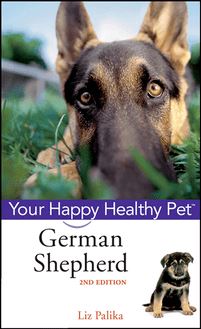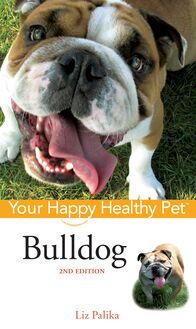-
 Univers
Univers
-
 Ebooks
Ebooks
-
 Livres audio
Livres audio
-
 Presse
Presse
-
 Podcasts
Podcasts
-
 BD
BD
-
 Documents
Documents
-
- Cours
- Révisions
- Ressources pédagogiques
- Sciences de l’éducation
- Manuels scolaires
- Langues
- Travaux de classe
- Annales de BEP
- Etudes supérieures
- Maternelle et primaire
- Fiches de lecture
- Orientation scolaire
- Méthodologie
- Corrigés de devoir
- Annales d’examens et concours
- Annales du bac
- Annales du brevet
- Rapports de stage
La lecture à portée de main
Vous pourrez modifier la taille du texte de cet ouvrage
Découvre YouScribe en t'inscrivant gratuitement
Je m'inscrisDécouvre YouScribe en t'inscrivant gratuitement
Je m'inscrisEn savoir plus
Vous pourrez modifier la taille du texte de cet ouvrage
En savoir plus

Description
PART ONE: Welcome to the World of the Ferret.
1. What Is a Ferret?
2. History and Ancestry of the Ferret.
3. The World According to the Ferret.
PART TWO: Living with a Ferret.
4. Bringing Your Ferret Home.
5. Feeding Your Ferret.
6. Grooming Your Ferret.
7. Keeping Your Ferret Healthy.
PART THREE: Enjoying Your Ferret.
8. Training and Socializing Your Ferret.
9. Having Fun with Your Ferret.
10. Ferrets and Your Family and Friends.
11. Legal Issues and Ferrets in Your Community.
PART FOUR: Beyond the Basics.
12. Recommended Reading.
13. Ferret Resources.
Sujets
Informations
| Publié par | Turner Publishing Company |
| Date de parution | 27 août 2007 |
| Nombre de lectures | 0 |
| EAN13 | 9780470253182 |
| Langue | English |
| Poids de l'ouvrage | 2 Mo |
Informations légales : prix de location à la page 0,0750€. Cette information est donnée uniquement à titre indicatif conformément à la législation en vigueur.
Extrait
The
Ferret
Copyright 1996, 2001 by Wiley Publishing, Inc., New York, NY
Howell Book House
Published by Wiley Publishing, Inc., New York, NY
All rights reserved. No part of this book may be reproduced or transmitted in any form or by any means, electronic or mechanical, including photocopying, recording, or by an information storage and retrieval system, without permission in writing from the Publisher.
No part of this publication may be reproduced, stored in a retrieval system or transmitted in any form or by any means, electronic, mechanical, photocopying, recording, scanning or otherwise, except as permitted under Sections 107 or 108 of the 1976 United States Copyright Act, without either the prior written permission of the Publisher, or authorization through payment of the appropriate per-copy fee to the Copyright Clearance Center, 222 Rosewood Drive, Danvers, MA 01923, (978) 750-8400, fax (978) 750-4744. Requests to the Publisher for permission should be addressed to the Legal Department, Wiley Publishing, Inc., 10475 Crosspoint Blvd., Indianapolis, IN 46256, (317) 572-3447, fax (317) 572-4447, E-Mail: permcoordinator@wiley.com.
Trademarks: Wiley, the Wiley Publishing logo and Howell Book House are trademarks or registered trademarks of Wiley Publishing, Inc., in the United States and other countries, and may not be used without written permission. All other trademarks are the property of their respective owners. Wiley Publishing, Inc., is not associated with any product or vendor mentioned in this book.
Limit of Liability/Disclaimer of Warranty: While the publisher and author have used their best efforts in preparing this book, they make no representations or warranties with respect to the accuracy or completeness of the contents of this book and specifically disclaim any implied warranties of merchantability or fitness for a particular purpose. No warranty may be created or extended by sales representatives or written sales materials. The advice and strategies contained herein may not be suitable for your situation. You should consult with a professional where appropriate. Neither the publisher nor author shall be liable for any loss of profit or any other commercial damages, including but no uted to special, incidental, consequential, or other damages.
For general information on our other products and services, please contact our Customer Care Department within the U.S. at 800-762-2974, outside the U.S. at 317-572-3993 or fax 317-572-4002.
Wiley also publishes its books in a variety of electronic formats. Some content that appears in print may not be available in electronic books.
Library of Congress Cataloging-in-Publication data
Shefferman, Mary.
The ferret: an owner s guide to a happy, healthy pet / by Mary Shefferman.
p. cm.
Includes bibliographical references
ISBN 0-87605-498-X
1. Ferrets as pets. I. Title.
SF459.F47S465 1996, 2001
636.974447-dc20 96-9030 CIP
Manufactured in the United States of America
15 14
Second Edition
Series Director: Kira Sexton
Book Design: Michele Laseau
Cover Design: Mike Freeland
Photography Editor: Richard Fox
Illustration: Casey Price
Photography:
Front and back cover photos by Eric Ilasenko
Susan Morrow: 16
Eric Shefferman: 6, 7, 13, 18, 22, 24, 25, 26, 28, 35, 43, 48, 53, 66, 68, 69, 93, 96, 105, 106, 112, 118
Michael Siino: 34, 76, 85, 109, 110-111
Renee Stockdale: 5, 10, 11, 12, 14, 15, 17, 19, 20, 21, 23, 29, 30, 31, 32-33, 37, 39, 40, 42, 45, 46, 49, 59, 60, 61, 62, 63, 64, 67, 70, 75, 79, 81, 87, 88, 89, 90-91, 92, 95, 98, 100, 102, 103, 104, 107, 110, 111, 114, 115, 117, 119
Judith Strom: 56
Faith Uridel: 9, 50, 113
Page creation by: Wiley Indianapolis Composition Services
Contents
part one
Welcome to the World of the Ferret
1 What Is a Ferret?
2 The Ferret s Ancestry of the Ferret
3 The World According to the Ferret
part two
Living with a Ferret
4 Bringing Your Ferret Home
5 Feeding Your Ferret
6 Grooming Your Ferret
7 Keeping Your Ferret Healthy
part three
Enjoying Your Ferret
8 Training and Socializing Your Ferret
9 Having Fun with Your Ferret
10 Ferrets and Your Family and Friends
11 Legal Issues and Ferrets in Your Community
part four
Beyond the Basics
12 Recommended Reading
13 Ferret Resources
chapter 1
What Is a Ferret?
So what is a ferret? A ferret is a small, furry, carnivorous (meat-eating) mammal from the family Mustelidae. A ferret s scientific name is Mustela furo, although those who ascribe to the theory that the ferret is a domesticated version of a European polecat prefer Mustela putorius furo.
Many people mistakenly believe that the ferret is the wild North American Black-Footed Ferret or another kind of wild animal. In fact, the ferret is a domesticated animal, not a wild animal who has been tamed or raised in captivity. The ferret was domesticated several thousand years ago to help hunters flush rabbits from their warrens (holes) and pursue small pests like rats and mice. (See Chapter 2 , History and Ancestry of the Ferret, for more information.)
In some European countries and Australia, the ferret still works at ferreting out rabbit warrens for hunters who set nets to catch the fleeing rabbits. But here in the United States, the ferret has retired from the working life and taken up the title of third most popular companion mammal. The ferret has earned a place of honor beside the dog and cat in the laps of hundreds of thousands of humans.
Today, the ferret has earned the title of the third most popular companion mammal.
In this role, the ferret performs many equally important functions. The ferret is curiosity in a fur coat. He is playful, highly inquisitive, fearless and friendly. The ferret has a sense of humor. He is intelligent and resourceful. His shape is elegant and his energy is boundless. A ferret is exuberant, affectionate and athletic (though a bit less than graceful). Above all, the ferret is simply adorable.
The Basic Information
Male ferrets are called hobs and females are called jills. A castrated male is called a gib and a spayed female is called a sprite. Baby ferrets are called kits. Females can be a little more fidgety than males. As males get older, they are more likely to turn into lap ferrets than females-but there are really no absolutes.
Hobs and gibs are up to 50 percent larger than jills and sprites. Hobs are usually between three and five pounds at maturity, while jills are usually between one and a half and three pounds. Ferrets neutered when they are very young do not usually get as big as those neutered after they reach six months old. For example, all four of our ferrets were altered when they were very young and they range in weight from one and a half pounds to three pounds-females and males. But we know some whole (intact) male ferrets that are between five and seven pounds. Some jills can be as big as a gib who was neutered young.
L IFE S PAN
Ferrets live between six and ten years. We ve heard of ferrets who lived to be twelve years old, but more commonly they live to seven or eight years. Ferrets are considered to be geriatric by the time they re four years old. Although genetics plays a large part in the longevity of ferrets, the care they receive plays a large role as well. Even the heartiest of ferrets will not do well if he is not fed proper food, kept in good health and given lots of love and affection.
FERRET LANGUAGE
Male ferrets are hobs and female ferrets are jills. A castrated male is a gib and a spayed female is a sprite. Names for groups of animals often come from observations about the behavior of those animals. It is not surprising, then, that a group of ferrets is called a business.
These ferret kits have the elegance, curiosity and just plain cuteness that make the ferret an attractive pet.
V OCALIZATION
Ferrets are quiet animals, for the most part. Many will make a kind of chittering-type noise that sounds like dook, dook, dook when they are excited or playing. Sabrina is the only one of our ferrets who makes this noise regularly, and she does it only in response to the sound of a squeak toy.
A ferret will hiss as a sort of warning to another ferret who s annoying him. When ferrets play together (and they can play rough), they tend to make a good deal of noise. Sometimes it sounds like they re hurting each other, but when you separate the two ferrets they go right back to play fighting. If a ferret is hurt, there is no mistaking the shriek.
M EAT E ATERS
Ferrets are carnivores, which means their teeth are designed for tearing and eating meat. Their canine teeth are long and, in most ferrets, stick out beyond the lips.
F ERRET O DOR
All mustelids have a characteristic musky aroma. The ferret has scent glands all over his body, including an anal scent glad that he can express in much the same way the skunk does, as a form of protection. However, the odor from a ferret s anal scent gland is not as pungent or as lingering as the odor from a skunk. Except in rare cases, a ferret will not express his anal scent gland unless he is frightened or feels threatened. For the most part, it is impossible to tell whether or not a ferret has been descented unless he has recently expressed the scent gland.
Ferrets in heat (jills) or rut (hobs) do smell, but because it is highly recommended that pet ferrets be neutered (females can die from complications of prolonged heat), you will not have to worry about that odor.
THE FERRET S RELATIVES
The ferret s closest relatives are the polecat, weasel and mink. Other relatives are the ermine (winter coat) or stoat (summer coat), skunk, otter, wolverine and the endangered North American Black-Footed Ferret (BFF). The ferret is the only domesticated member of the family.
C OLORS AND M ARKINGS
You should choose your ferret based on his personality, but seasoned ferret owners know that I don t have that color is a good excuse to get another
-
 Univers
Univers
-
 Ebooks
Ebooks
-
 Livres audio
Livres audio
-
 Presse
Presse
-
 Podcasts
Podcasts
-
 BD
BD
-
 Documents
Documents
-
Jeunesse
-
Littérature
-
Ressources professionnelles
-
Santé et bien-être
-
Savoirs
-
Education
-
Loisirs et hobbies
-
Art, musique et cinéma
-
Actualité et débat de société
-
Jeunesse
-
Littérature
-
Ressources professionnelles
-
Santé et bien-être
-
Savoirs
-
Education
-
Loisirs et hobbies
-
Art, musique et cinéma
-
Actualité et débat de société
-
Actualités
-
Lifestyle
-
Presse jeunesse
-
Presse professionnelle
-
Pratique
-
Presse sportive
-
Presse internationale
-
Culture & Médias
-
Action et Aventures
-
Science-fiction et Fantasy
-
Société
-
Jeunesse
-
Littérature
-
Ressources professionnelles
-
Santé et bien-être
-
Savoirs
-
Education
-
Loisirs et hobbies
-
Art, musique et cinéma
-
Actualité et débat de société
- Cours
- Révisions
- Ressources pédagogiques
- Sciences de l’éducation
- Manuels scolaires
- Langues
- Travaux de classe
- Annales de BEP
- Etudes supérieures
- Maternelle et primaire
- Fiches de lecture
- Orientation scolaire
- Méthodologie
- Corrigés de devoir
- Annales d’examens et concours
- Annales du bac
- Annales du brevet
- Rapports de stage




















